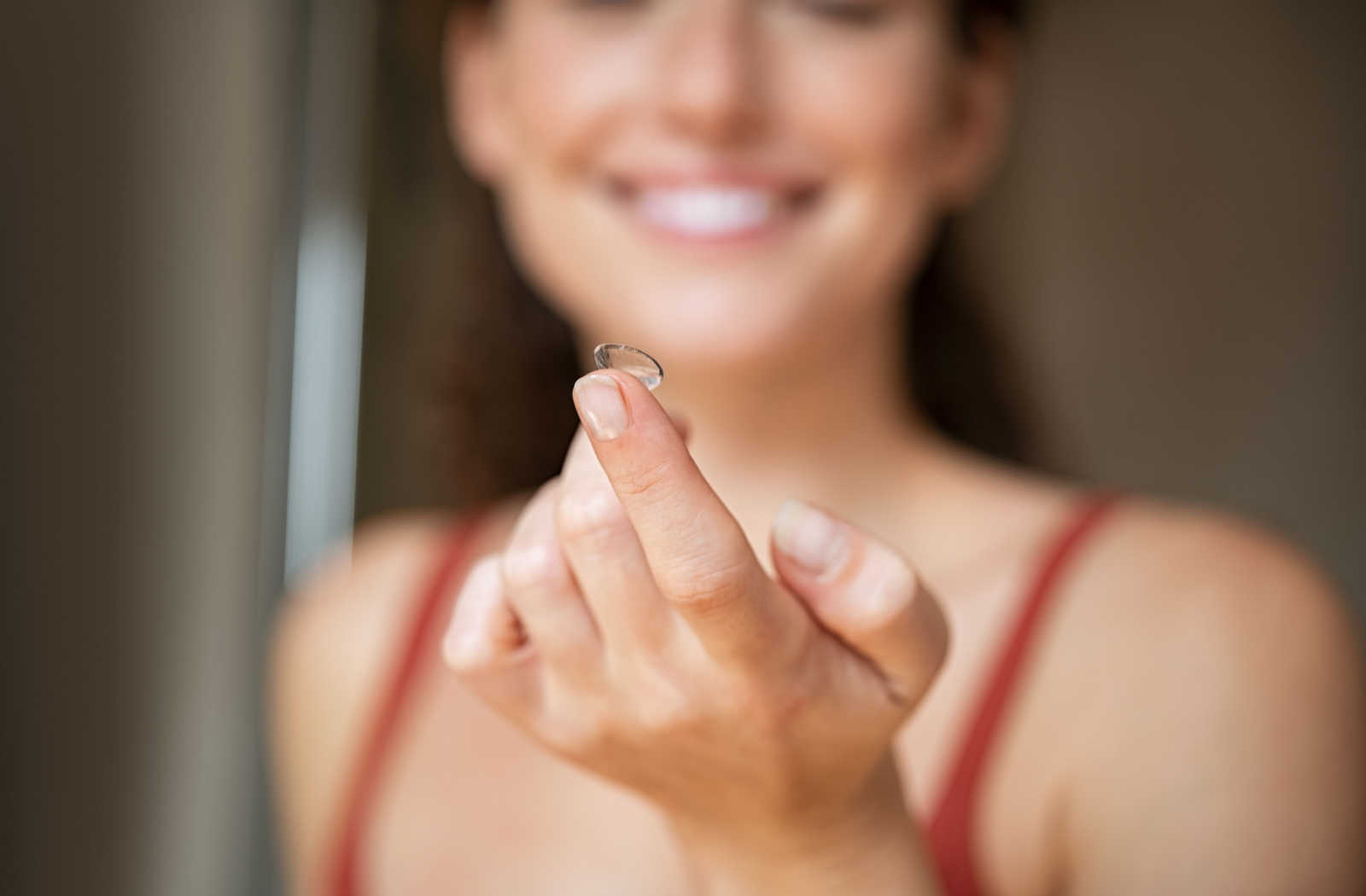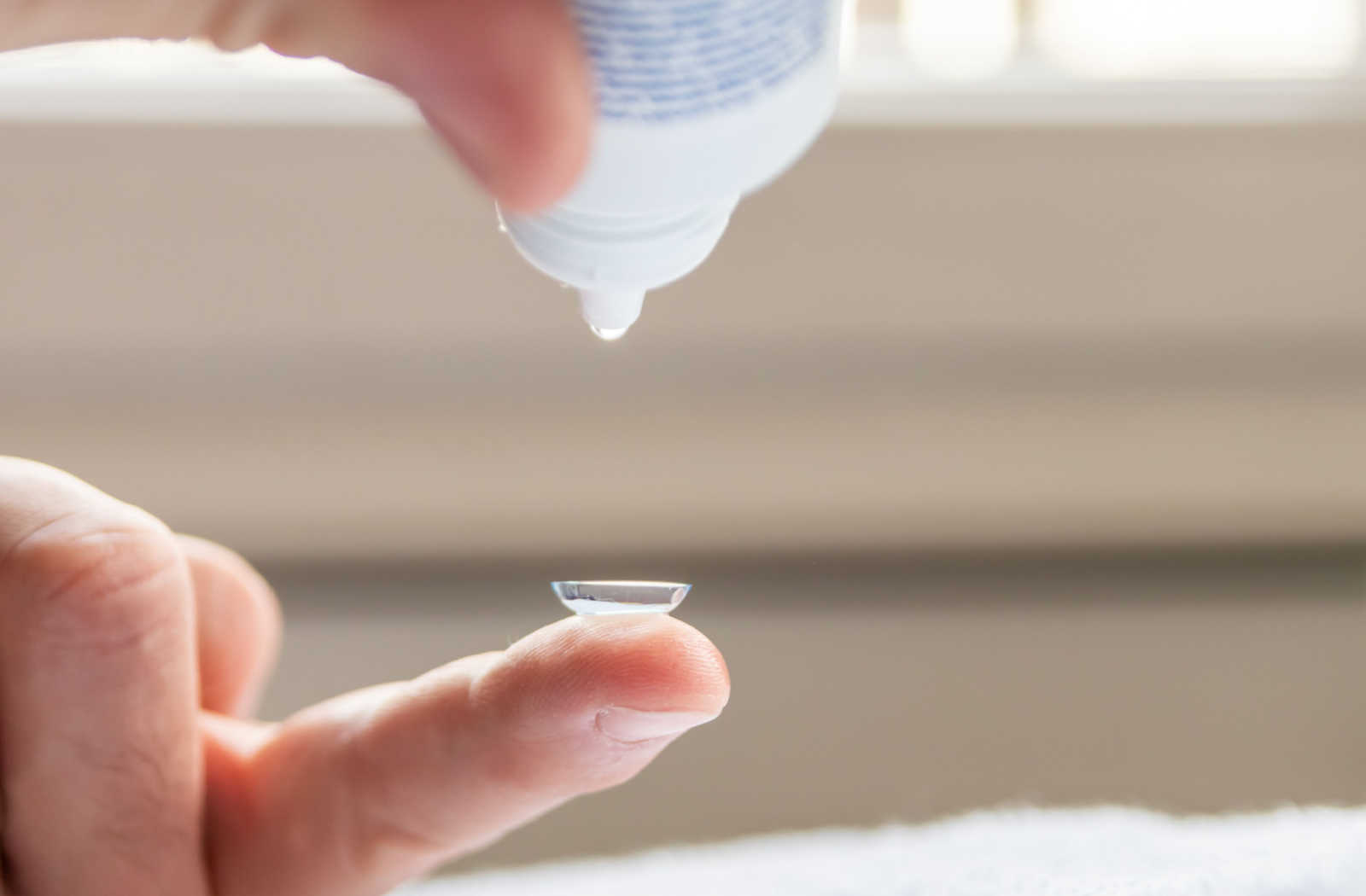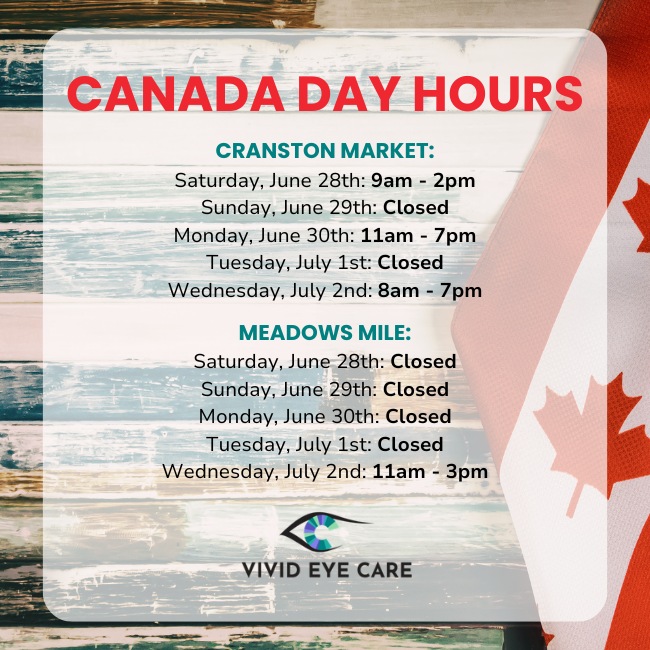It’s true that dry eye can be made even more miserable by wearing the wrong contact lenses. But with more contact lens options and styles than ever before, chronic dry eye sufferers can find the right pair that feels comfortable on their eyes. Contact lens replacement schedule, moisture content, and lens material can all contribute to relieving or exacerbating dry eye symptoms.
If you find yourself relying on glasses when you’d rather wear contact lenses but worry about your dry eye, your optometrist can perform a precise fitting in a contact lens exam to successfully start your contact lens journey. You may need to try a few trial pairs before you find the best style for your unique eyes, but once you do, you’ll finally achieve clear vision without feeling a thing.
What Causes Dry Eye?
Dry eye is a common condition that can affect anyone, regardless of whether or not they wear contacts. It occurs when the eyes don’t produce enough tears or when they evaporate too quickly, leaving them feeling dry and scratchy.
Your tear film consists of 3 layers to provide comfort, nourishment, and lubrication to your eye, including:
- The outermost lipid layer helps keep tears on the eye’s surface by sealing the tear film
- The middle water layer washes away debris, prevents infection, and hydrates the eyes
- The innermost mucus layer allows the aqueous middle layer to spread evenly over the eye’s surface and provide nourishment to the cornea
Many factors can contribute to dry eye, including:
- Age
- Hormonal changes
- Previous eye surgery
- Certain medications and medical conditions
- Environmental factors like wind, air conditioning, or low humidity
- Frequent digital screen use
When it comes to wearing contacts with dry eyes, it is essential to consult with an optometrist who can assess the severity of your condition and make personalized recommendations. In some cases, switching to a different type of contact lens or using lubricating eye drops may be helpful.
Contact Lens-Induced Dry Eye
Contact lenses can worsen or even cause dry eye symptoms if they’re not appropriate for dry eye sufferers. If contact lenses disrupt your tear film and absorb the tears like a sponge, they can cause irritation and discomfort.
Your cornea also needs a free flow of oxygen to moisturize and nourish the eye’s surface. If the contact lens is ill-fitted over the cornea and blocks the passage of air, your eyes will begin to feel scratchy and gritty.
While contact lenses can worsen dry eyes under certain conditions, finding the right contact lenses with a specific combination of features are available for dry eye. You can find a pair that fits your eye that feels like a custom lens with hydration to last throughout the day.
Minimize Dry Eye from Contact Lenses
Find the Right Contact Lens Type
Contact lenses aren’t one-size-fits-all, and your eyes have unique needs. When you’re at higher risk for developing dry eyes, certain contact lens features can restore comfort.
- Low water content: it may seem counterintuitive, but contact lenses with high water content tend to draw moisture from your natural tears, drying out your eyes faster
- Replacement schedule: daily disposables are the best replacement schedule for dry eye sufferers because it prevents protein and deposit buildup that can leave eyes feeling dry over the pair’s lifespan
- A proper fitting: a proper contact lens fitting is critical in eliminating inflammation and irritation while helping you achieve the best vision correction
Choose the Best Solution for Dry Eyes
Your contact solution can make even the right contact lenses feel uncomfortable. Solutions are for more than just sterilizing your contacts at the end of the day; they help your eyes feel refreshed when you reinsert them in the morning.
Your optometrist can help recommend contact solutions following your contact lens exam based on your eyes and contact lenses.
Practice Good Contact Lens Care
Good contact lens care reduces your risk of eye infections and inflammation. With daily disposable lenses, your contact lens care routine is simplified—you should practice thorough hand hygiene, but you don’t have to disinfect and store your lenses. To take care of your contact lenses, you should:
- Wear your contact lenses only for the amount of time directed
- Wash your hands before touching your face
- Rub and rinse your lenses with fresh solution before storing them to remove deposits and particles on the lenses
- Keep water away from your lenses, including swimming, showering, and using water in place of contact solution
- Clean your contact case by rinsing it with contact solution
- Replace your contact lens case at least every 3 months
Find the Best Contact Lenses for Dry Eye
Contact lenses shouldn’t make your eyes feel gritty, scratchy, or sting and burn. With the right pair of contacts, you should be able to forget they’re in your eyes.
If you haven’t found this perfect pair, visit the doctors at Vivid Eye Care for an updated contact lens exam and fitting to take precise eye measurements, discuss your symptoms, and try contact lenses designed for dry eyes.























